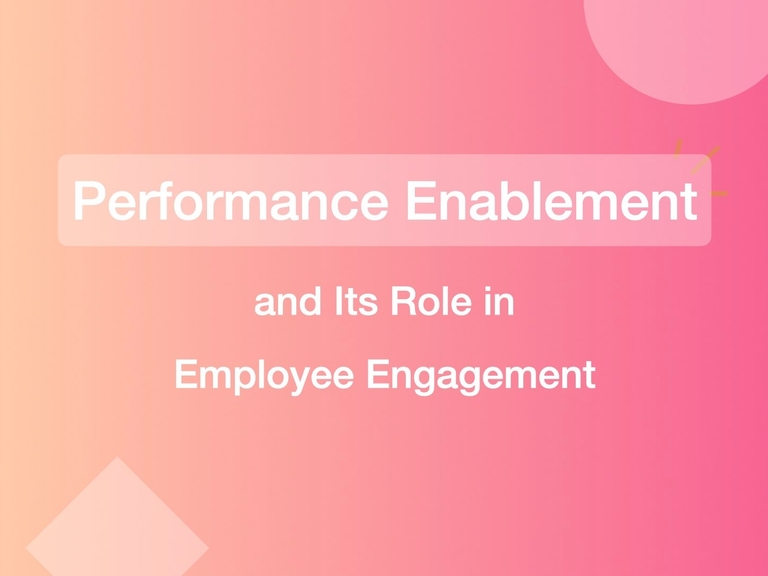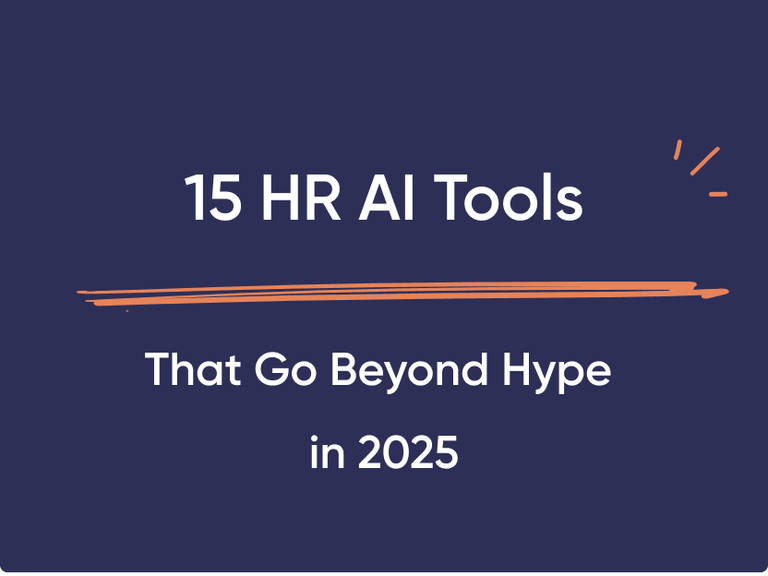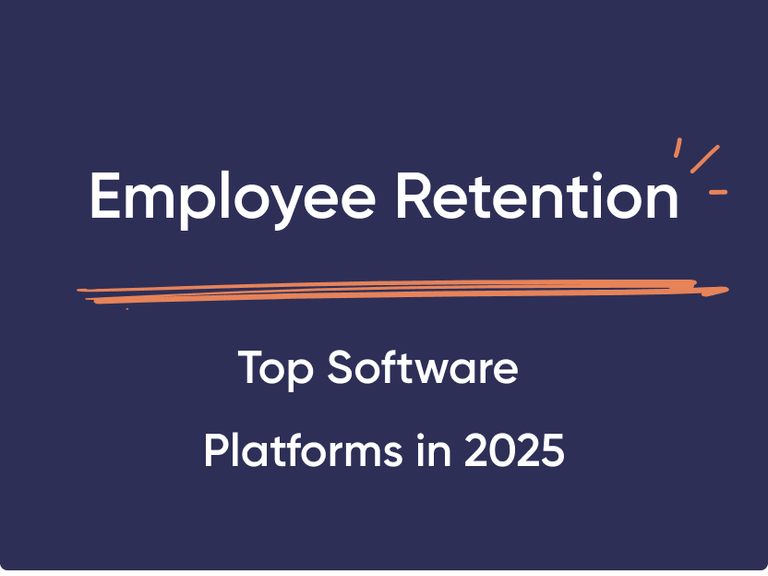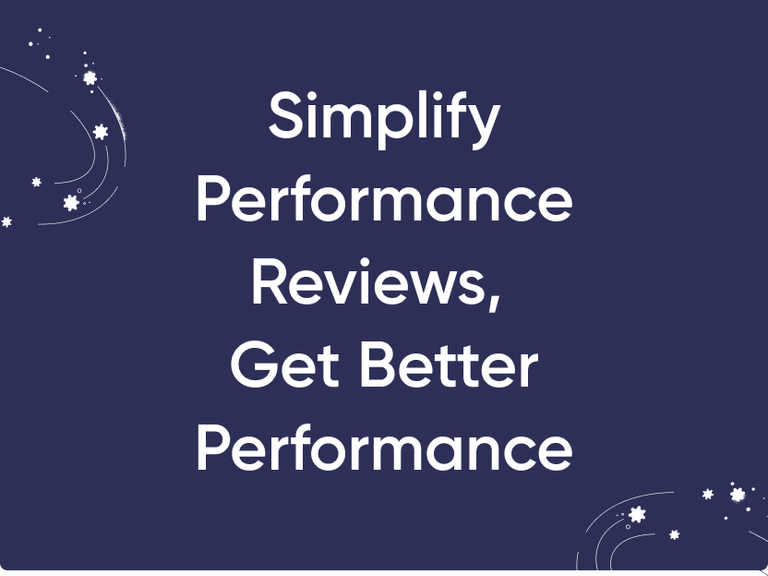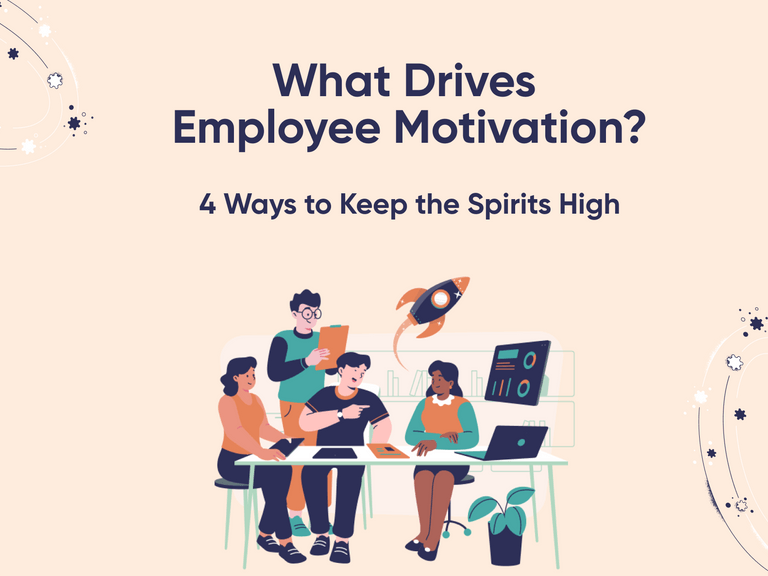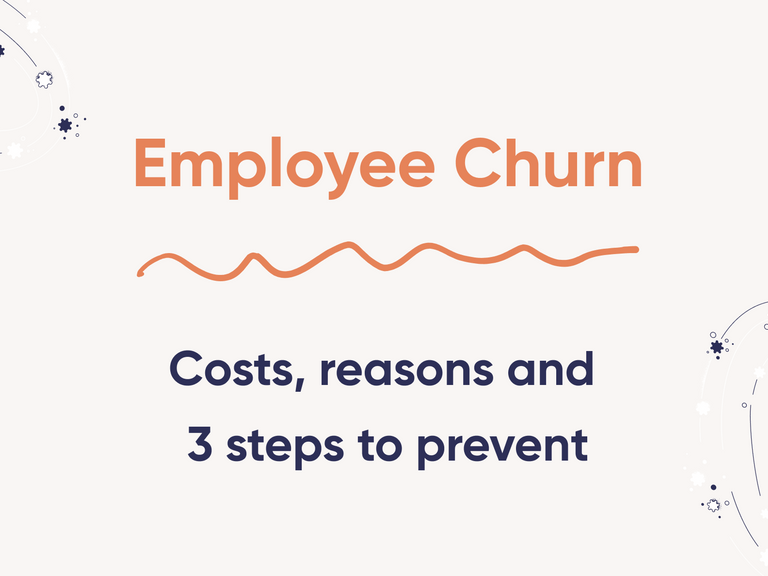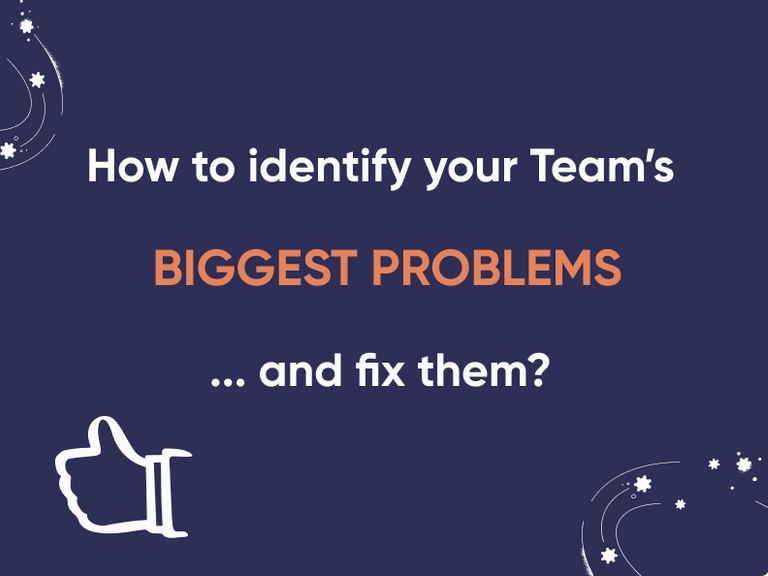Top 12 Ennova Alternatives for Stellar Employee Experience
Ennova has built a solid reputation in the Nordic markets for employee engagement surveys and advisory services. But as the employee experience landscape evolves, modern organizations need more than just feedback collection. They need platforms that transform insights into actionable leadership guidance. Let me walk you through why you might consider Ennova alternatives and the top 15 solutions…
Top 15 Viva Glint Alternatives to Scale Your Company's Growth
Microsoft Viva Glint gained attention after Microsoft acquired Glint. However, for many companies, Glint might not be the most optimal solution as they struggle to move from gathering feedback to taking meaningful action. Below, I’ll share 15 Viva Glint alternatives that help you do more than just collect data. They help you grow. What Is Microsoft Viva Glint? Microsoft Viva Glint is a tool that…
Employee Engagement Pulse Surveys: Everything You Need to Know
I've spent over a decade helping organizations understand their employees better. I’ve learned that short, regular check-ins are the best way to keep track of how people feel at work. That’s exactly what pulse surveys are for. If you're an HR professional, team leader, or business owner looking to boost employee engagement without overwhelming your workforce, this guide will walk you through…
Top 10 Employee Listening Tools for Organizational Growth
Top 10 Employee Listening Tools for Organizational Growth Many companies want to understand what their employees think. But they often don’t have the right tools to gather and act on that feedback. I've seen this problem again and again while helping teams improve their workplace culture. That’s where employee listening tools come in. These tools help companies grow and keep their best people…
Employee Feedback Survey: How to Create + 40 Questions
Employee feedback surveys are key to a healthy organization. But many companies still struggle with poor response rates, confusing questions, and survey fatigue. That’s why I’m sharing what I’ve learned about building surveys that actually work (and lead to real improvements). If you're in HR or a leader trying to better connect with your team, this guide will help. You'll learn how to create…
30 Best Employee Engagement Tools for the Entire Employee Journey
I’ve seen many companies face the same problem: keeping employees engaged throughout their journey. Things have changed fast. Remote work, hybrid teams, and demand for personalized experiences have made engagement more challenging. I’ve worked with organizations across Europe and the US and reviewed hundreds of tools. Some didn’t live up to the hype. Others quietly improved engagement from within…
10 Employee Recognition Software Solutions to Keep Employees Satisfied and Engaged
After more than 10 years in leader positions, I've seen how employee recognition can completely shift a workplace. I've watched teams go from disconnected and unmotivated to engaged and high-performing. All because leaders made recognition a priority. Recognition isn’t just about saying “thanks.” It’s about building systems that help employees feel valued, seen, and motivated to do great work. The…
Leadership Competency Model: What It Is and How to Build It
I've worked with many companies over the years. Most struggle with one big problem: their leaders aren't consistent. Some are great. Others just get by. This creates problems between teams. It also hurts performance. The fix? Build a clear leadership competency model. This creates consistency across your company. In this article, I'll show you what these models are. I'll explain why they matter…
Performance Enablement and Its Role in Employee Engagement
Bad leadership creates problems that hurt everyone. Teams don't work well together. People feel unsafe speaking up. Good employees quit. Most companies still use old ways to manage performance. They do yearly reviews. Bosses set goals from the top down. They give feedback too late to help. This doesn't work anymore. We need a better way. It's called performance enablement. This article will cover…
15 Best Employee Engagement Survey Vendors and Providers
Employee engagement is a key factor in how well a company performs. Still, many companies struggle to measure and boost engagement effectively. The challenge isn’t just running surveys, it’s choosing the right survey provider. After working with hundreds of teams, I’ve seen how the right tool helps identify real issues and drive improvements. This guide covers 15 top employee engagement survey…
Leadership Development Plan: Building Consistent, Data-Informed Leaders
I've spent years partnering with organizations trying to solve the same persistent challenge: how to turn overwhelmed managers into consistent, data-informed leaders who drive real organizational performance. What I've discovered through my experience is that most leadership development initiatives fail not because of poor content or lack of investment, but because they don't become part of a…
Leadership Development Tools to Empower Your Leaders and Teams
Effective leadership is crucial for an organization's success. Yet many companies struggle with inconsistent leadership quality, which directly impacts employee engagement, performance, and retention. In 2025, Gartner's HR priorities survey shows that leader and manager development tops the list, with 75% of HR leaders reporting that managers are overwhelmed and not properly equipped to lead…
Leadership Enablement: How to Equip Your Leaders for Success
Mediocre leadership directly translates to underperformance. As a leader working with HR and business executives across industries, I've witnessed firsthand how leadership quality makes or breaks company success. Multiple research articles confirm what many of us see in our work: we need a systematic approach to leadership enablement that gives every leader the tools, insights and support to…
15 Qualtrics Competitors and Alternatives in 2025
In my experience working with dozens of organizations, I've seen how employee feedback tools have evolved from simple survey platforms to comprehensive leadership enablement solutions. Qualtrics established itself as the pioneer in experience management software, but today's organizational challenges demand more than just collecting feedback. Modern companies need solutions that transform insights…
Top 20 Employee Engagement Tools to Drive Organizational Success
Employee engagement is the backbone of thriving organizations. As someone who's spent years helping companies transform their workplace dynamics, I've seen firsthand how engaged employees become the driving force behind innovation, productivity, and ultimately, business success. The numbers tell a compelling story. Highly engaged teams show 21% greater profitability, according to Gallup. On the…
Top eNPS Software in 2025: 15 Tools That Deliver More Than Just Scores
Having worked with dozens of organizations, I've seen firsthand how eNPS has become a critical metric for measuring loyalty and satisfaction. But what's changed dramatically in recent years is how organizations collect and act on this data. The most successful companies I work with don't just gather scores. They use sophisticated eNPS software to transform feedback into actionable insights that…
15 HR AI Tools That Go Beyond Hype in 2025
With 75% of HR leaders saying managers are overwhelmed and not equipped to lead effectively, AI tools are stepping in to bridge the gap. The right AI solutions can enable better leadership, enhance decision-making, and create more personalized employee experiences. In this article, we’ll take a look at how AI is transforming HR processes, and share the top 15 tools that make a real difference. How…
Top 12 Employee Retention Software Platforms in 2025
One of the tools companies use to keep their top talent is employee retention software. When used strategically, these platforms act as a strategic tool that empowers leaders to identify issues before they become exit interviews. Let's dive into what these platforms can do and which ones are leading the pack. Understanding Employee Retention Software At its core, employee retention software helps…
15 Best Employee Development Tools to Scale Business Growth
As someone who has worked with 50+ high-growth companies on their employee development strategies, I've seen firsthand how the right tools can transform organizational performance. In this article, I'll share insights on the most effective employee development tools available and how to select the right ones for your business needs. What Are Employee Development Tools? Employee development tools…
HR Analytics Tools To Transform Workforce Data into Strategic Insights
As companies navigate the complexities of talent management, HR analytics tools have become vital assets for turning vast amounts of people data into actionable insights. In this article, we’ll explore the world of people analytics tools, their key features and their influence on company culture. What Are HR Analytics Tools? HR analytics tools are specialized software platforms that collect…
12 Best Performance Review Software: Tools, Importance and Impact
Despite the clear benefits of effective performance management, Gartner's HR priorities survey reveals that 75% of HR leaders believe managers are overwhelmed and ill-equipped to lead change, culture, and employee development. That’s where performance review software can help! In this comprehensive guide, we'll explore the 12 best performance review software tools, their key features, and how they…
15 Best HR Software Tools for Growth Companies to Scale Your People Operations
Growth companies experience a distinct set of HR challenges that established enterprises don't face. When your headcount doubles or triples within a year, your HR processes need to evolve quickly to keep pace. Scaling isn't as simple as just adding more people. It's all about developing leadership capabilities, maintaining culture, driving organizational performance, and implementing systems that…
15 Best Employee Survey Tools to Unlock Employee Insights in 2025
When used right, employee survey tools can not only track engagement but enable HR and leaders to improve it. They can uncover performance challenges before employees lose interest or leave. So in this article, we’ll demystify what makes a good employee survey tool, explore the best options on the market, and see how AI fits into the picture. What are Employee Survey Tools? Employee survey tools…
Comprehensive Guide to the Best 360-Degree Feedback Software: Features, Benefits, and Best Tools
Traditional annual performance reviews no longer cut it. Modern teams need continuous, comprehensive feedback that captures multiple perspectives. Enter the world of 360-degree feedback, where the spotlight isn't just in your manager's hands, but shared among peers, subordinates, and sometimes even customers. As organizations recognize the value of diverse perspectives in professional development…
25 most important employee survey questions
Good employee survey questions provide invaluable insights, and most CEOs and People leads know that neglecting them can be very costly. Forerunners are replacing heavy annual/bi-annual surveys with weekly/bi-weekly pulse surveys that allow tracking real-time trends and reacting to issues proactively. However, as with any problem solving, asking the right questions is what matters. What those…
Written vs. Spoken Feedback - When to Use Each Type
Feedback is vital for both personal and professional development. But is it better to give feedback in written or orally? The truth is that both types are needed, just the ideal format depends on the situation and the people involved. In this article, we will go over when you might want to give written feedback and when spoken feedback might be a better option. Both types of feedback have their…
Turnover contagion – why employees quit after their colleagues?
Attracting new talent is tough and expensive. With developers and other IT talent, the total cost of recruiting and onboarding can add up to 6 to 9 months’ salary! And that's before accounting for the lost productivity until the new employee has been onboarded. Hence, your top talent leaving can feel like watching diamonds slipping through your fingers. However, it can get much worse. Just one or…
Simplify Performance Reviews, Get Better Performance
Too often companies struggle with heavy and discouraging feedback processes, such as performance reviews, 360 feedback, talent reviews. Long survey forms, many open-ended questions, and overloaded processes that drain employee energy. Planning for the maximal impact, it seems tempting to over-engineer what should be a straightforward goal: to ensure employee performance and foster growth. This…
7 Tips for Receiving Feedback
Receiving and integrating feedback from other people is an important skill to have in business – but also in other walks of life. Most people realize that feedback is one of the best mechanisms by which we all learn, yet far too often people struggle with receiving feedback; why is that? 1. How to receive feedback: Get curious You may not have asked for the feedback, but you can still learn from…
eNPS Benchmark Guide: What Makes a Good Employee Net Promoter Score?
Leaders seeking to measure their organizational health often turn to eNPS benchmarks as a compass. When you understand how your Employee Net Promoter Score stacks up against industry standards, you gain clarity on where your leadership truly stands. This guide breaks down what eNPS is, what constitutes good eNPS benchmarks, and how the right leadership platform can help you boost this vital metric…
How AI Will Revolutionize 1-1s
One-on-one discussions are one of the most powerful, yet massively under-utilized leadership tools. They are crucial for driving high employee performance and solving problems in a timely manner. And yet, many organizations fail to take full advantage of them. In this article we’ll discuss why companies should improve their 1-1s, what are common problems impacting 1-1 quality, and then focus on…
Navigating the feedback jungle: Reinforcing vs redirecting feedback
Let’s say it out loud: feedback is messy. You’re probably holding in something right now, with no idea of how to say it or how the other person would respond. Consequently, it’s likely you’ll never give that feedback. Perhaps you’ll wait for the right moment to come, not knowing exactly what it would be. You’re not alone. What Research Shows About Effective Feedback Personal feedback is a hot…
Creating a Fair Feedback Model That Works
After extensive research into feedback approaches, we've discovered that combining elements from proven frameworks creates the most practical and fair feedback model. This approach capitalizes on strengths while minimizing weaknesses. What Are the Two Traditional Feedback Models? As we reviewed dozens of feedback formulas and feedback tools, we quickly discovered that there were two that stood out…
Build Further Insights and Automatically Manage users in Teamspective Through HRIS Integration
The Teamspective platform integrates with 30+ HRIS systems, allowing you to automatically sync employees and teams to our platform as well as gain deeper insights from engagement data by combining it with information such as seniority level or salaries from your HR system. Easier User Management Managing users and teams in Teamspective is now smoother than ever. You can now set up HRIS…
Organizational Network Analysis: What is is and how it works
Every company has an organizational structure in place, typically represented by an org chart. Based on it, every employee should have a clear idea of who reports to whom and how decision making works. But an org chart tells very little how people in your company actually work. This is where organizational network analysis comes in as it helps uncover how your teams and individual employees…
How to ask for feedback like a pro – 6 essential tips
Have you ever received feedback that left you feeling confused rather than helped? Or perhaps you've waited months for insights, only to hear vague comments like "you're doing fine"? You're not alone. Feedback conversations rank among the most stressful social situations we face. While feedback has a potential to build trust and respect, many people have had bad experiences with feedback (being on…
Essential Insights That Traditional Employee Engagement Surveys Don't Tell You
In today's fast-paced work environment, understanding employee engagement is crucial. While we have more tools than ever to gather insights on how engaged our employees are, the problems arise when we have to make sense of the data. This blog discusses blind spots of employee engagement surveys and explains why focusing on the web of relationships between employees is crucial in addition to the…
Employee Engagement Glossary
Whether you're a seasoned HR professional, a newly appointed manager, or a business leader striving to cultivate a vibrant workplace culture, grasping the key terms and concepts related to employee engagement can help build a more motivated, committed, and satisfied workforce. Teamspective’s Employee Engagement Glossary is your comprehensive guide to the world of employee engagement. This glossary…
How Survey AI Can Revolutionize Employee Engagement
"Survey AI" is rapidly becoming a buzzword, as the promise of combining AI technology with survey methodologies holds great promise. AI can streamline the survey process and enhance the quality of insights gathered, making it an invaluable asset for organizations aiming to improve things such as employee engagement and workplace satisfaction. But how can AI be utilized in surveys in the best way…
7 Key Organizational Surveys to Spearhead Growth
Table of Contents Engagement Surveys Pulse Surveys eNPS (Employee Net Promoter Score) Surveys 360-Degree Feedback Surveys Exit Surveys Culture Surveys Onboarding Surveys Introduction Employee surveys are essential for staying on the pulse of your workplace and ensuring organizational growth and satisfaction. While different types of surveys can be used for various purposes, there is no…
Understanding eNPS: A Comprehensive Guide for Businesses
Table of Contents Introduction What is eNPS? The Importance of eNPS How to Effectively Measure eNPS Benchmarks for eNPS Strategies for Improving eNPS Challenges in eNPS Measurement Best Practices in eNPS Measurement The Future of eNPS Conclusion 1. Introduction The Employee Net Promoter Score (eNPS) is a tool offering insights into employee satisfaction and loyalty. This guide delves into the…
The Definitive Guide to Pulse Surveys in 2024
Table of Contents Introduction What is a Pulse Survey? The Benefits of Pulse Surveys Designing an Effective Pulse Survey Interpreting Pulse Survey Results Challenges and Best Practices The Future of Pulse Surveys Conclusion 1. Introduction The ability to measure employee engagement and respond to employee sentiments is invaluable for organizations. This is what a pulse survey is for. As a…
Applying AI sentiment analysis in engagement surveys – benefits, applications, implementation
AI Sentiment Analysis is a powerful tool for accurately understanding the attitudes and sentiments inside your organization. In this article, you’ll learn how AI sentiment analysis can be used to gain further insights from engagement surveys, how it differs from manual analysis, and what the key benefits are. We also explore how Teamspective’s pulse solution makes it easy for HR managers and…
Building Teamspective's Pulse Survey Data Model
After reviewing this paper you... gain an appreciation for the conceptual nature of various facets of human experience, as well as insights into transforming these concepts into actionable and measurable questions.know the importance of measurement scales and what things to consider when choosing the most appropriate scale.can explain the function and purpose of several important statistical…
Top 7 data sources for Organizational Network Analysis with pros and cons
Organizational Network Analysis (ONA) is a powerful tool for uncovering genuine connections within your company, pinpointing influential employees, and mitigating issues like org silos, employee overburden, and inefficient information flows. As hybrid and remote working becomes the new reality, companies are recognizing the need to grasp the actual organization structure beyond traditional org…
The 3 Types of Feedback (and How To Give Criticism Effectively)
Feedback is the lifeblood of any high-performing team. When leaders know how to give the right kind of feedback at the right time, they unlock their team's true potential. But not all feedback is created equal. Knowing which type to use and when can make the difference between a motivated team and a disengaged one. In this brief article, we will look at the 3 types of feedback and explain how and…
How to Improve Employee Motivation? 4 Ways to Keep the Spirits High
Employee motivation is essential for the success of any organization, yet cultivating it consistently remains challenging. This article explores which key engagement metrics motivation affects and presents practical approaches to boost it effectively. The real impact of high employee motivation Employee motivation is a strong predictor of your organization’s eNPS and employee wellbeing. When…
How to put engagement data into action? Introducing Teamspective’s AI-powered Pulse Snapshots
In today's people-first companies, a robust employee engagement toolkit is crucial. It's tempting to think that adopting a modern pulse survey solution is a silver bullet for solving most critical engagement issues, but is it really that simple? While these modern tools are great at collecting troves of employee engagement data, issues typically arise when you need to interpret it to get…
Implementing Teamspective is even easier with Okta integration
In today's fast-changing business world, efficiency, security, and streamlined processes have become crucial. Navigating a multitude of applications while ensuring access control and data protection are just a few of the many challenges faced by companies worldwide. Addressing these intricate needs, Okta emerges as a pivotal solution, providing a secure identity cloud that bridges the gaps and…
The Secret Behind Consistently High Employee Pulse Survey Response Rates
Are you wondering how to get consistently high response rates for your employee pulse surveys? The answer lies in taking supportive actions and creating a culture of continuous improvement. In this blog post, we'll explore why high response rates matter, the secret to creating a culture of continuous improvement, why real-time measuring of employee experience and engagement is beneficial, and how…
Boost Your Team’s Happiness with Pulse Surveys: The Ultimate Employee Mood Tracking Solution
Employee mood tracking has become an increasingly popular tool for managers and HR professionals to better understand their employees' experiences at work. With the rise of remote work and distributed teams, it has become more challenging to gauge employee engagement and wellbeing in the workplace. Fortunately, there is a solution called Pulse Surveys that can help organizations track and improve…
Creating a Culture of Performance: Elements of a Good Employee Performance Management Process
Employee performance management is a critical process that has a significant impact on a company’s overall performance. However, it can also be a source of stress and anxiety for many individuals. In this blog post, we will explore the importance of performance management, the benefits of an effective process, and how Teamspective can help HR decision-makers create a performance management system…
Revolutionizing Communication at Workplace: The Platinum Rule
In a world where effective communication is the key to success, it's crucial to understand the different approaches one can take to ensure a harmonious and efficient workplace environment. While many of us grew up hearing about the Golden Rule – "treat others as you would want to be treated" – there's a more powerful approach that can revolutionize workplace communication: the Platinum Rule. This…
HR Surveys vs Pulse Survey – And How to Get the Best of Both Worlds
Traditional Pulse Surveys: Real-time mood and trends A pulse survey is a short and frequent survey that collects real-time feedback on employee engagement and satisfaction. They consist of a couple of questions, sometimes only one, and are conducted weekly, bi-weekly or monthly. Pulse surveys provide companies with quick insights into their employees' engagement and satisfaction levels, allowing…
Employee churn: costs, reasons, and steps to avoid it
Employee churn can be devastating for companies due to the extra costs, time, and productivity loss associated with it. This article allows you to calculate employee churn and savings potential for your company as well as discusses 5 common reasons for employee churn and 3 steps to prevent it. According to a 2021 Microsoft survey, 40% of employees are actively considering leaving their jobs. In…
How ONA helps fast-growing companies?
Being a part of a scaleup company is an exciting journey with enormous opportunities and unique challenges. If your company is growing (or aiming to grow) more than 50% a year, you need to be ready to deal with constant change and the fact that many things must be re-created regularly. As a result, some employees start carrying a lot of responsibility for supporting others, and everyone must try…
Effective people analytics: 3 simple steps to get started
How well do you understand your company’s people and your teams? Leaders typically rely on org charts, HR information system (HRIS) data, annual surveys, and their own intuition in trying to understand their organization as well as people’s wellbeing and engagement. However, annual surveys and infrequent development discussions generate at best a momentary snapshot of the state of the company. Org…
How to identify your team's biggest problems and fix them?
Employee feedback is crucial for any people-oriented company. If you are already collecting feedback regularly via pulse surveys, keep it up! 💪🏻 Nevertheless, the hardest part is to take action on your data. Not knowing what exactly can be done can be very frustrating. This article presents the best practices for identifying your team’s biggest problems and addressing them. “Where should I focus…
Complete Feedback Guide: The Art of Giving and Receiving Feedback
In any professional's life, feedback is one of the best ways to communicate appreciation and to understand how we could do better in the future. In other words, it’s essential for us to learn, grow, achieve our full potential and to remain engaged at work. In this guide, we will share everything you need to know about feedback. Click the links to learn more, and bookmark this page to find these…
5 Steps for Managers to Improve Pulse Survey Results
It’s tempting to think that having pulse surveys in place is enough to improve team wellbeing and collaboration. However, it is even more important to create a routine of taking action and monitoring progress on the collected results. Here’s how. The five steps to use Teamspective pulse surveys smartly By applying these proven practices, you'll notice dramatic improvements in team’s engagement…
Boost Employee Engagement in Cross-Functional Teams
Today, the role of cross-functional teams has drastically increased. This trend presents unique challenges and opportunities for employee engagement. In this article, we explain what cross-functional teams are, look at the challenges they face, and explore how simple and interactive feedback processes can help managers boost employee motivation, wellbeing and collaboration. What are cross…
4 Common Blockers to Implement Pulse Surveys - What are you leaving on the table?
Implementing pulse surveys may not seem to be an urgent thing to do, but without them great opportunities to boost employee engagement can be missed. Let’s explore together why companies of almost any size would benefit from pulse surveys. What are pulse surveys? Let’s make sure we are thinking about the same thing! Pulse surveys are quick, regular check-ins with employees to gauge how they're…
How Can Modern HR Technology Help You Motivate Employees?
Today HR professionals have powerful tools that help them successfully run and develop operations even in the most demanding environments. At the same time there are still areas where the potential of technology is underestimated. For example, employee performance reviews and 360 feedback, employee collaboration, and employee engagement. In this article we share how modern tools can help to…
The 5 Languages of Appreciation: Make Employees Feel Valued
Have you ever felt underappreciated at work? You put in your best effort only to feel like it didn’t matter. Feeling unappreciated is more common than most people realize. In fact, some studies suggest that a whopping 80% of employees in the US think they’re not shown enough appreciation at work. As recognized by Mazlow and many researchers after him, appreciation is a basic human need. When…
How people block feedback
Have you ever hesitated to give feedback? Most of us have, and it’s often because we are worried about the other person’s reaction. Besides working on your skill of giving feedback, it’s good to identify the possible ways in which feedback can be blocked. In this article, we will go over the four reasons why people block feedback. In addition, we will explain how to identify these different…
The ROI of investing in feedback culture
Why are top performing companies above the herd? It’s because they’re always looking for ways to be and do better, and have done that before. Feedback provides valuable information that's needed to make crucial decisions. Effective feedback stimulates learning and has a huge value across all parts of the company. So how valuable is feedback? The return on investment of building a feedback culture…
The Perfect Amount of Feedback
Getting feedback is probably the best mechanism for personal growth and professional development; however, it's unlikely to be very helpful if the feedback we receive is too vague, too infrequent or focuses on the wrong things. Getting too much feedback is a rare problem, as studies have shown. So, what’s the right amount of feedback? And how often should you ask for it? Feedback satisfies three…
The Missing Piece of a Successful Hybrid Remote Working Model
The internet is full of tips and tricks on how organizations can adapt and thrive in the new landscape. Some excellent resources have been published recently by authorities such as Forbes, LinkedIn, and Gartner, and the advice contained therein is very useful -- but only up to a point. The thing is this: there's only so much that can be set up or resolved by the company. Certainly, some companies…
The Importance of Pulse Surveys in Measuring Employee Wellbeing
Benefits of Pulse Surveys Honesty, Anonymity and Reliability: Pulse surveys provide a safe channel of communication for employee feedback. Using pulse surveys, companies can get feedback on topics that may be hard to talk about in person. Employees will be more open to sharing their thoughts knowing that they can expect anonymity. In addition, pulse surveys administered through Teamspective are…
The world needs better feedback
Feedback is central for learning and growth Thriving in a fast-paced working environment requires constant growth. Similarly, excelling as a team requires continuous learning and adjustment. This necessity of learning and growth applies to every high-ambition workplace. That’s why it’s so beneficial to adopt a ‘growth mindset’, allowing us to seek out feedback about what works and what doesn’t…
Science behind Teamspective's pulse questionnaire
Scientific research is the backbone of a great pulse questionnaire In order to help our customers make data driven decisions to improve wellbeing and team collaboration, we've studied extensively the science behind successful teamwork, productivity, psychological needs, employee wellbeing, and organizational culture. Here we're presenting the top 4 scientific theories that have helped shape the…
Watch out for these mistakes with positive feedback
The evidence in favour of positive feedback coming from leaders and co-workers is overwhelmingly strong. Positive feedback improves creative problem solving, performance under pressure, social relationships, and even individuals’ physiology. In addition to the good feelings it creates, positive feedback reinforces mutual trust and helps build on individual strengths. However, there are some ways…
Strategies for creating psychological safety
The problem: scared people don’t speak up when they should Picture this. You’re sitting in a meeting and haven't contributed to the discussion in the first 30 minutes. When you get a new idea on how a major problem could be solved, you patiently wait for your turn to speak, but soon notice the chance has already passed. Others seem to have all the answers, and so you stay silent and comply with…
Why we need feedback
Well-delivered feedback not only inspires learning and personal growth, but it also helps people satisfy their psychological needs. We need connection with other people and feedback is an act of connecting. Reinforcing feedback builds esteem by demonstrating respect and appreciation between people. Redirecting feedback or otherwise discussing sensitive topics helps build trust, contributing to…
The Feedback Shortfall
We have a chronic feedback shortage Research on feedback agrees that the majority of people are not satisfied with the feedback they receive. Not only is there a shortage in the amount and frequency of feedback, but also with quality, relevance, focus and delivery. Here are some of the results we’ve found: In a study published in Harvard Business Review, 82 % of employed Americans think they don’t…








